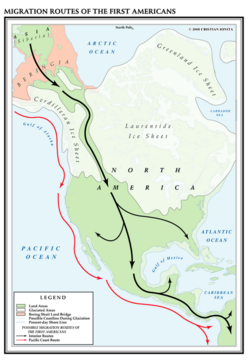CENSUS WATCH: Masking identities or counting the indigenous among us?
 By Robert Dr. Cintli Rodriguez, New America Media
By Robert Dr. Cintli Rodriguez, New America MediaIt was when I first stood atop the Pyramid of the Sun in Teotihuacan,Mexico in 1976 that I was finally able to grasp something my parentsfirst communicated to me when I was five years old; that my roots onthis continent are not simply Mexican, but both ancient and Indigenous.
My red-brown face should have been enough to teach me this. However,that was not the message I received in school at the time, nor is itthe message little red-brown kids receive today.
I experienced a similar kind of reaffirmation this past month when Istood in front of the world-renowned, ancient Mayan observatory atChichen Itza, on Mexico's Yucatan peninsula.
Upon my return to the United States, I received a message from acolleague regarding the U.S. Census Bureau. My mouth soured; anotherdecade and another story about how the bureau paradoxically insiststhat Mexicans are Caucasian. I will have to explain to them again thatMexicans are the descendants of those who built the pyramids atTeotihuacan and Chichen Itza -- that it was not Caucasians who builtthem.
The genesis of this nonsensical "misconception" goes back to the erawhen the United States militarily took half of Mexico in 1848. At thattime, the Mexican government attempted to protect its former citizensby insisting that the U.S. government treat them legally as "white," sothey would not be enslaved or subjected to legal segregation. Thatstrategy only partially worked, because most Mexicans in this countryhave never been treated as "white," or as full human beings with fullhuman rights.
That era is long over, yet the fear, shame, denial, and semi-legalfiction of being "white" remains, perpetrated primarily by governmentbureaucrats.
Despite the bureau policy of racial categorization, the IndigenousCultures Institute in Texas, a Census 2010 partner, has advanced analternative: It asserts that Hispanics, Mexican Americans, andIndigenous people of Mexico are native or American Indian. Afteranswering Question 8, regarding whether one is Hispanic or not, theinstitute suggests: "If you are a descendant of native people, you canidentify yourself (in Question 9) as an American Indian in the 2010Census... If you don't know your tribe, enter 'unknown' or 'detribalizednative.' If tribe or identity is known, fill it in, i.e., Macehual,Maya, Quechua, etc."
This may not be the best option, but the bureau has never made it easyto recognize the indigenous roots of "Mexican Americans/Chicanos" or "Latinos/Hispanics." The long and sordid history of the census has beento direct or redirect them into the white category, even -- andespecially-- when they have asserted their indigenous roots or when theyhave checked the "other" race category. (Since 1980, about half ofHispanics/Latinos have checked the "other" race category and arevirtually the only group that chooses this category.) This has been astandard practice of the bureau since the second half of the twentiethcentury. Coincidentally, this is also when government bureaucratsimposed the term "Hispanic," a tag that generally masks the existenceof indigenous and/or African roots in many peoples of the Americas.
In 2000, the Census Bureau finally recognized a Latin American Indiancategory, but it did not create an educational campaign to go with it.The bureau now recognizes peoples who are traditionally viewed (usingarbitrary criteria) as indigenous in Mexico, Central and South America,but it does not recognize those who are considered "mestizo" -- peopleswho are at least part, if not primarily, native. The mestizo category,borne of a dehumanizing racial caste system in the Americas, is also atroublesome category, yet it is how most people of Mexican and CentralAmerican descent identify, comprising approximately 75 percent of all "Latinos/Hispanics."
The Indigenous Institute promotes its idea as a means by which MexicanAmericans or Latinos/Hispanics can honor their indigenous ancestry. Ifthis option is widely embraced, it remains to be seen how the bureauwill count this information. The same question arises if people choosethe American Indian category and write in "mestizo."
Traditionally, the bureau has taken a narrow view of who is indigenous,because the "American Indian" category was designed not to ascertainthe indigenous, but to count "U.S. Indians." If a more expansive viewis embraced widely -- as advocated by the institute -- it would resultin an increase from 5 million (the 2009 census estimate) to perhaps 30to 40 million people. (Not all of the nation's close to 50 millionHispanics/Latinos can or would claim indigenous ancestry.)
If done correctly, the institute's suggestion need not negativelyaffect the allocation of resources to specific tribes. Neither shouldthe way people identify be subject to government approval. Yet, theramifications of exercising such an option should indeed be studied.
Rodriguez, an assistant professor at the University of Arizona, can be reached at XColumn@gmail.com.
(Map from edmaps.com.)
